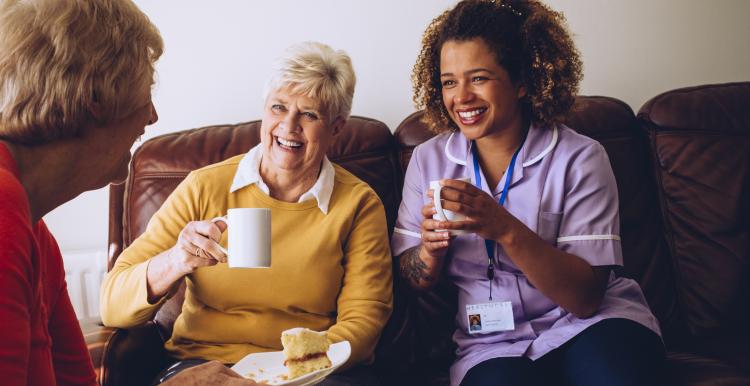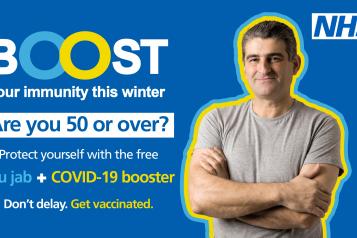Coronavirus: advice for visiting friends or family in a care home

Care home visits
This guidance applies from 31 January 2022 and replaces previous guidance on care home visiting
There are no nationally set direct restrictions on visiting in care homes.
Providers are encouraged and expected to facilitate visits wherever possible, and to do so in a risk-managed way.
Visiting is an integral part of care home life. It is vitally important for maintaining the health, wellbeing and quality of life of residents. Visiting is also crucial for family and friends to maintain contact and life-long relationships with their loved ones, and to contribute to their support and care.
People living in care homes are typically more vulnerable to severe illness as a result of coronavirus (COVID-19). While vaccination is proving very effective, we are still seeing some cases of severe illness, hospitalisation and death of care home residents who have been vaccinated.
Additional measures are therefore in place to facilitate visiting while keeping care home staff and residents safe. These include:
- infection prevention and control (IPC) measures
- individual risk assessments
- testing arrangements
- isolation on return from some high-risk activities out of the home
IPC refers to a practical, evidence-based approach taken by organisations which prevents patients and health workers from being harmed by avoidable infection.
The key things to know about care home visiting are
- Visitors should make arrangements with care homes in advance of the visit, so that care providers can manage the number of people attending at any one time to ensure safe visiting practices can be maintained taking into account the size and layout of the care home.
- The duration of visits should not be limited if safe visiting practices can be maintained.
- Visits should take place in a room most practical and comfortable for the resident (for example, residents with dementia may be more comfortable in their own room with familiar belongings).
- Visitors should receive a negative lateral flow test result and report it on the day of their visit, either by conducting the test at home or when they arrive at the care home – essential care givers need to follow the additional testing arrangements outlined below.
- Every care home resident should be supported to have an identified essential care giver who may visit the home to offer companionship or help with care needs – essential care givers should be able to visit inside the care home even during periods of isolation and outbreak, providing the essential care giver does not have COVID-19.
- During an outbreak, care providers should also continue to offer visits outdoors, in visiting pods or from behind windows – rooms should be left to ventilate with external doors and windows open between uses wherever possible, while aiming to maintain a comfortable temperature for residents and visitors.
- Subject to a risk assessment by the health protection team (HPT), outbreak restrictions may be lifted if 10 days have passed since the onset of symptoms in the most recent case, a round of PCR recovery testing of all residents and staff is undertaken, and there are no PCR positive results.
- Physical contact should be enabled to help health and wellbeing, as long as IPC measures are in place, such as visiting in a ventilated space, using appropriate personal protective equipment (PPE) for the visit, and hand washing before and after visiting – gloves are not needed for handholding and stringent adherence to hand washing is advised.
- Residents should be supported to undertake visits out of the care home as appropriate, following the reasonable precautions and testing arrangements outlined in this guidance.
- It is strongly recommended that residents and visitors receive 2 doses of the COVID-19 vaccine, plus their booster especially in light of the emergence of the Omicron variant. The data shows that booster doses are required to provide higher levels of protection against symptomatic infection. If eligible, visitors should also get their flu jab when it is offered to them.
- Visitors should not enter the care home if they are feeling unwell, even if they have tested negative for COVID-19 and are fully vaccinated and have received their booster. Transmissible viruses such as flu, respiratory syncytial virus (RSV) and norovirus can be just as dangerous to care home residents as COVID-19. If visitors have any symptoms that suggest other transmissible viruses and infections, such as cough, high temperature, diarrhoea or vomiting, they should avoid the care home until at least 5 days after they feel better.
- Visitors who are not legally required to self-isolate are advised against visiting the care home (for 10 days) if they have been identified as a close contact of someone with COVID-19, unless absolutely necessary, even if they have been fully vaccinated. Where visits do occur, visitors should have received a negative PCR test result prior to their visit, and a negative lateral flow test result earlier in the day of their visit.
To read more about guidance on care home visits, follow this link.
Have you been affected by changes to government guidance on care home visiting?
We would like to hear from you if you or your loved one has been affected by changes to government guidance, so we can support improvements in the care.
020 8099 5335
